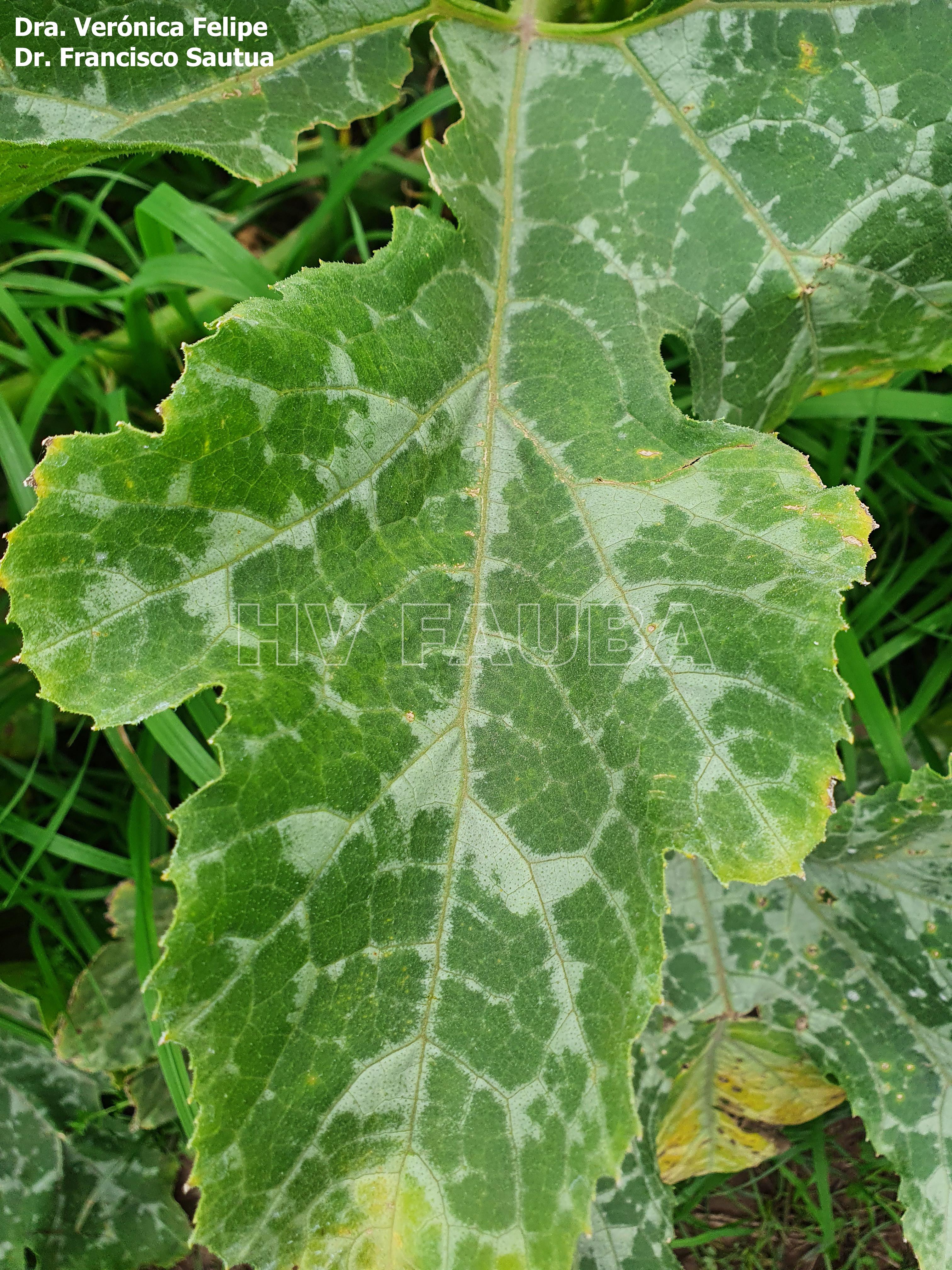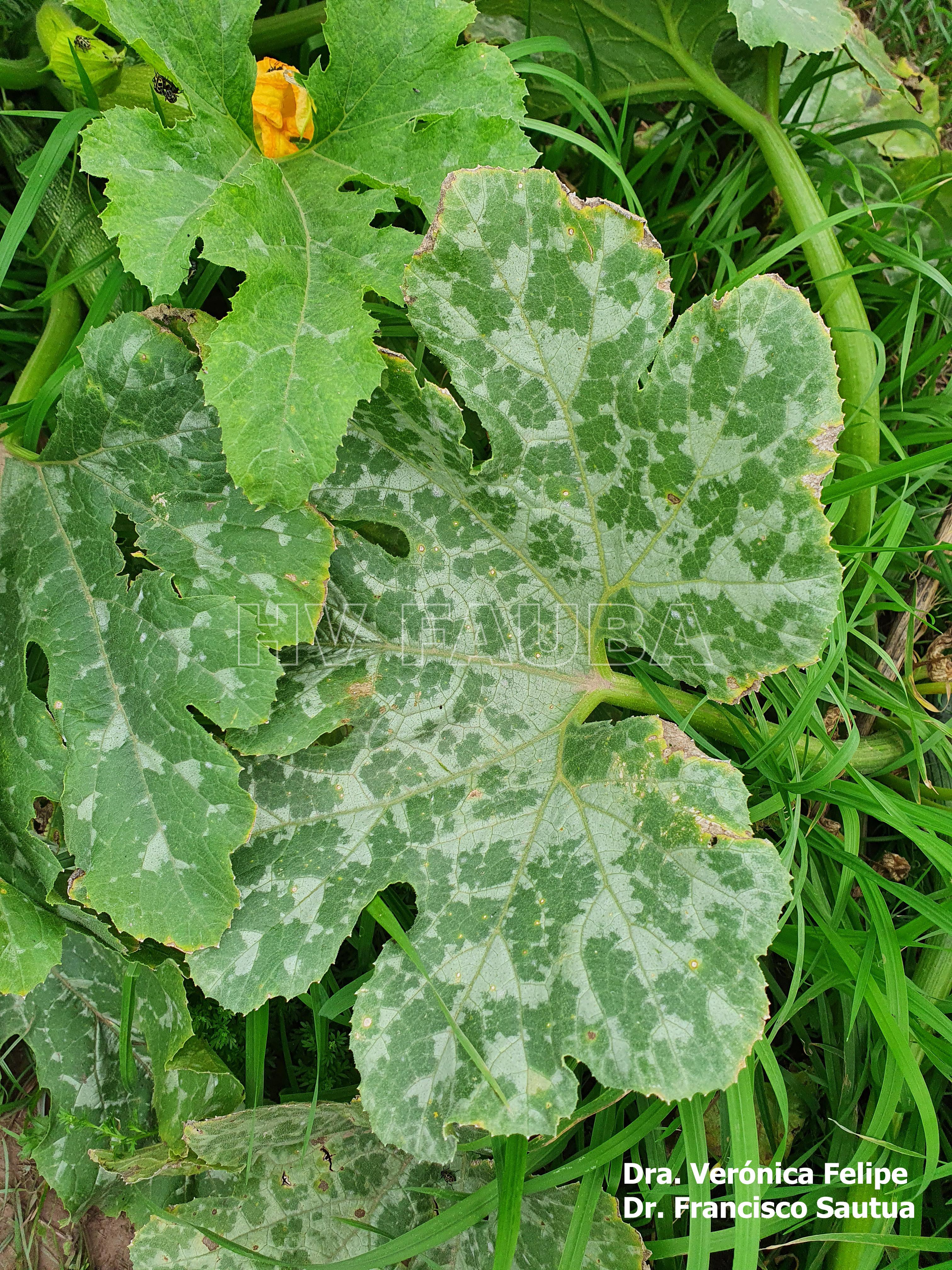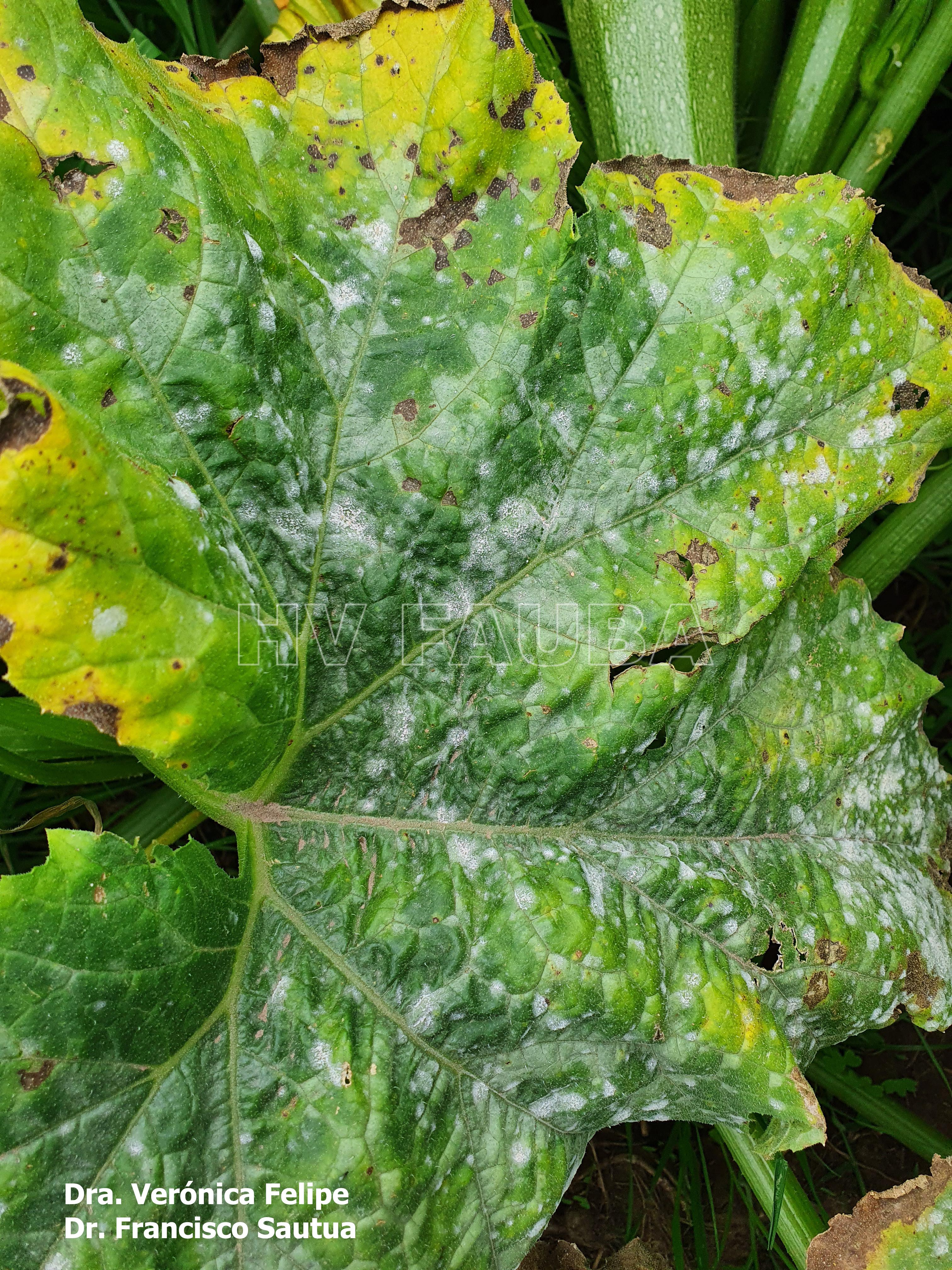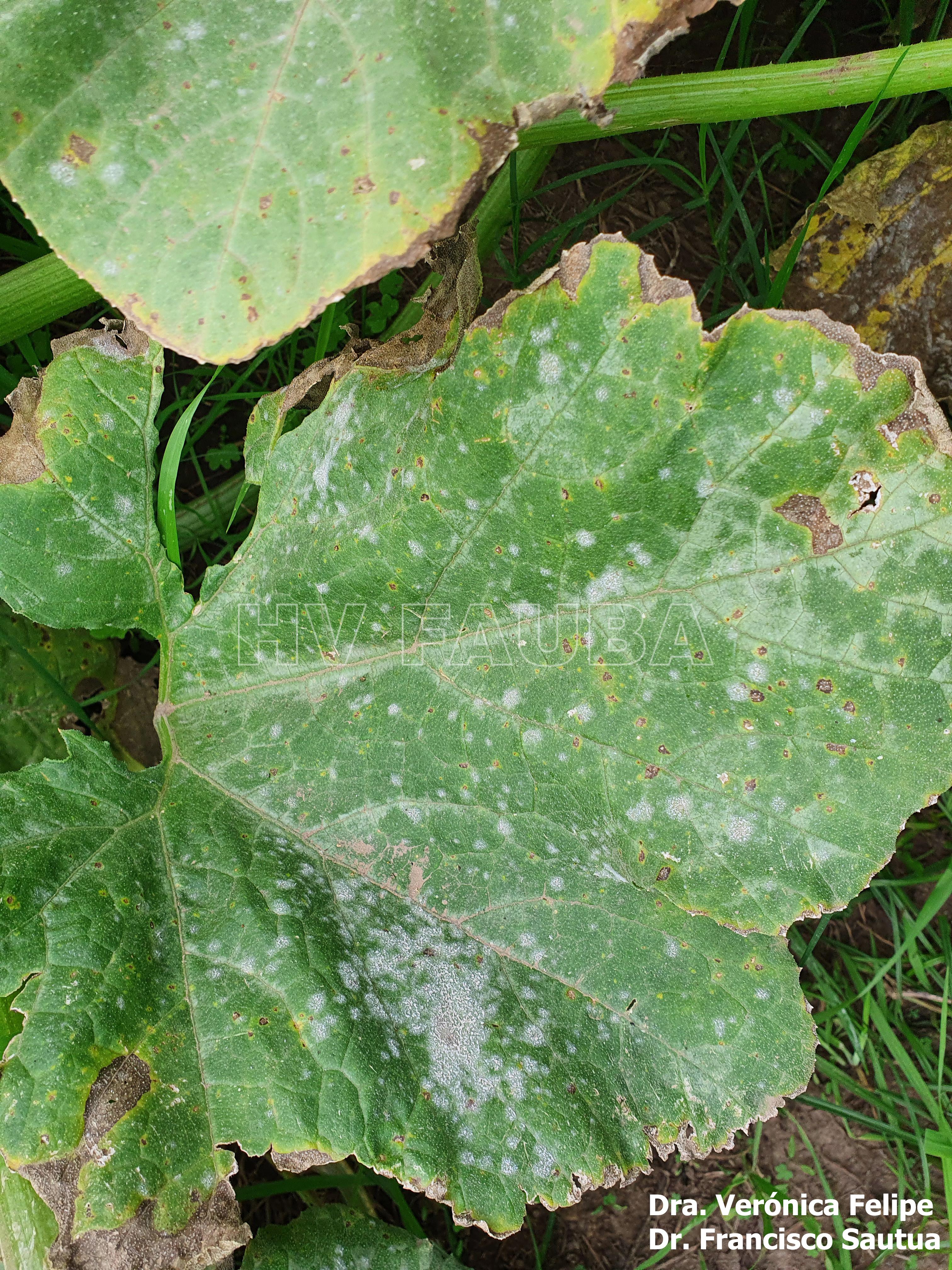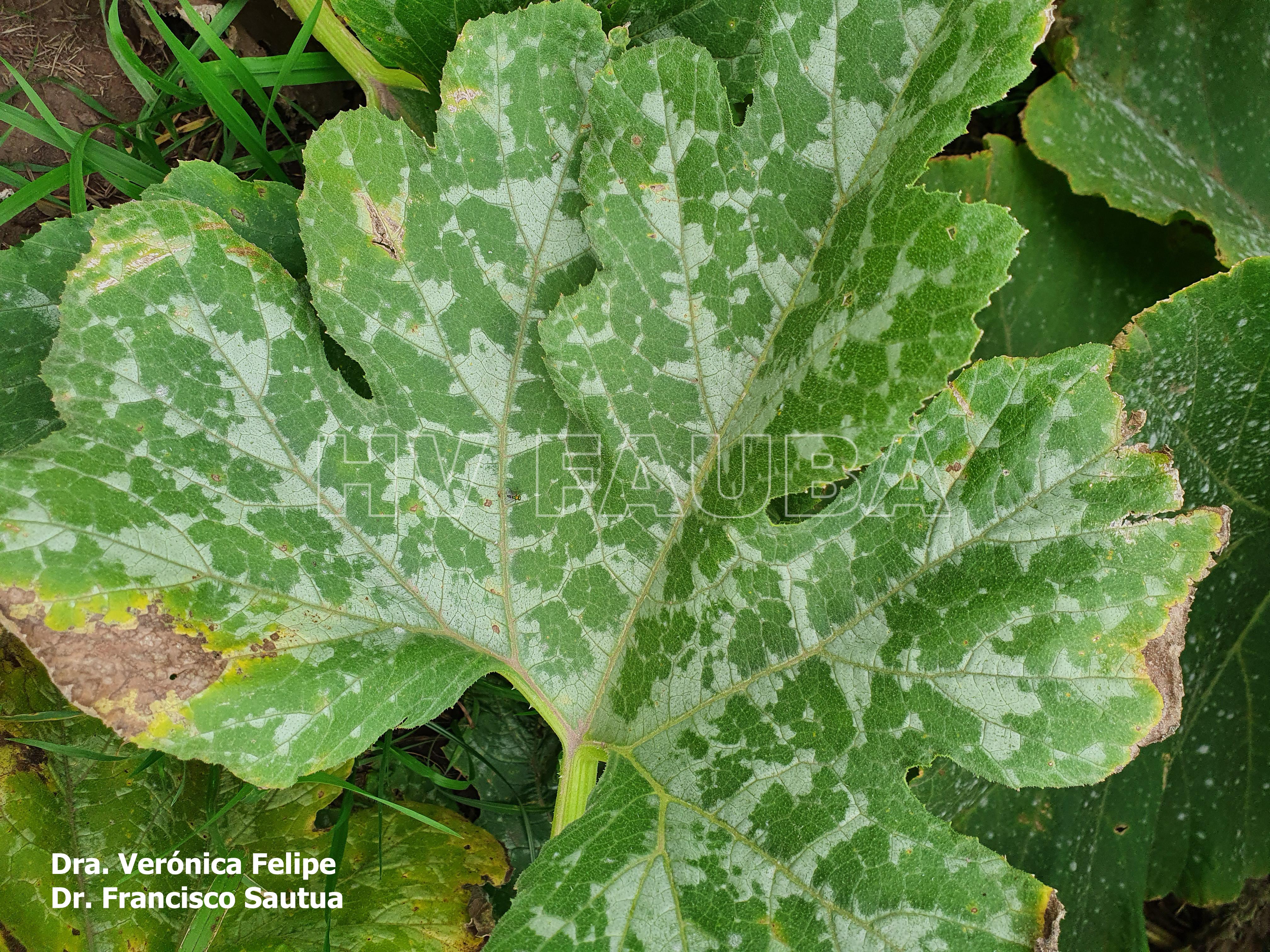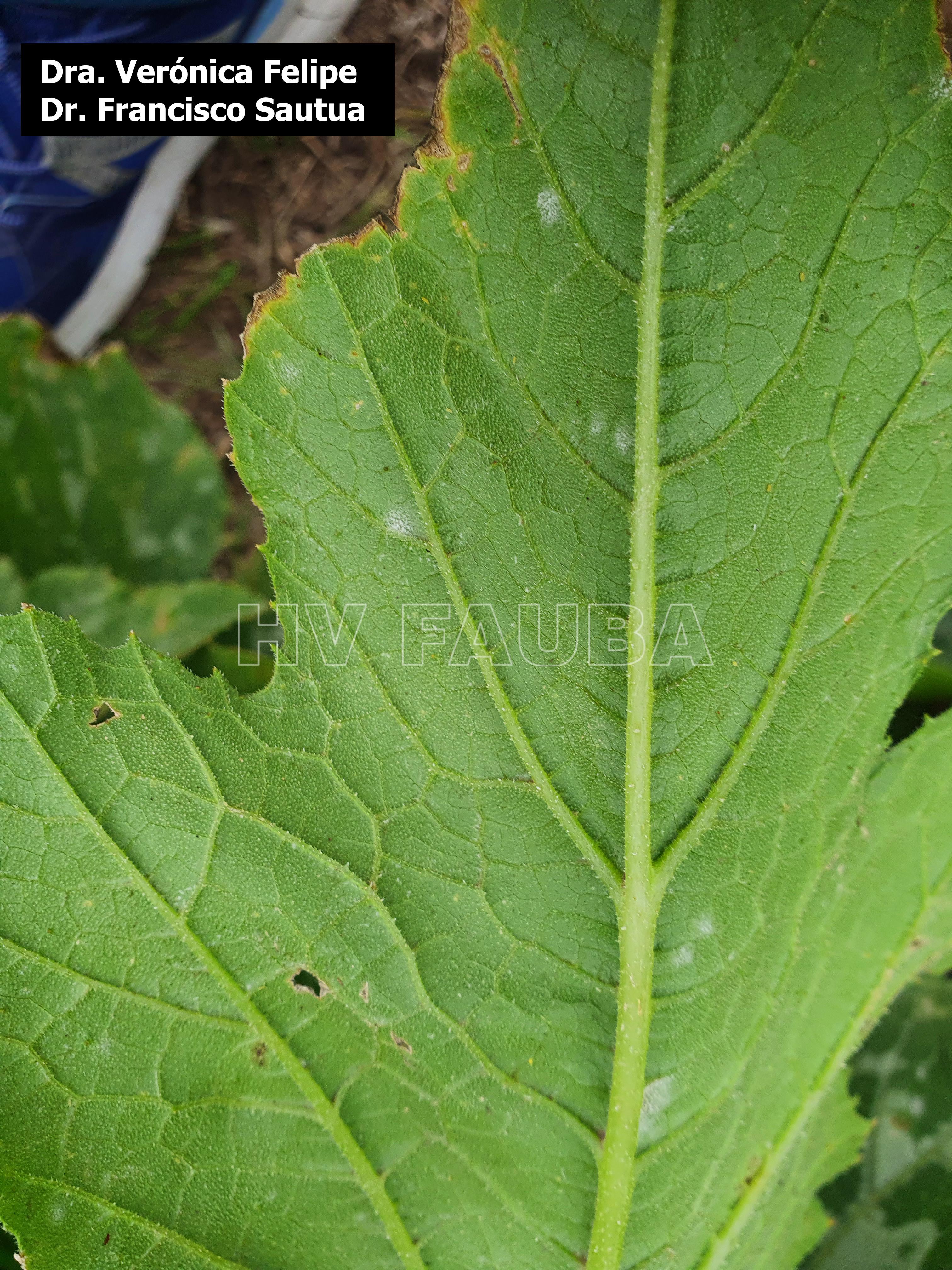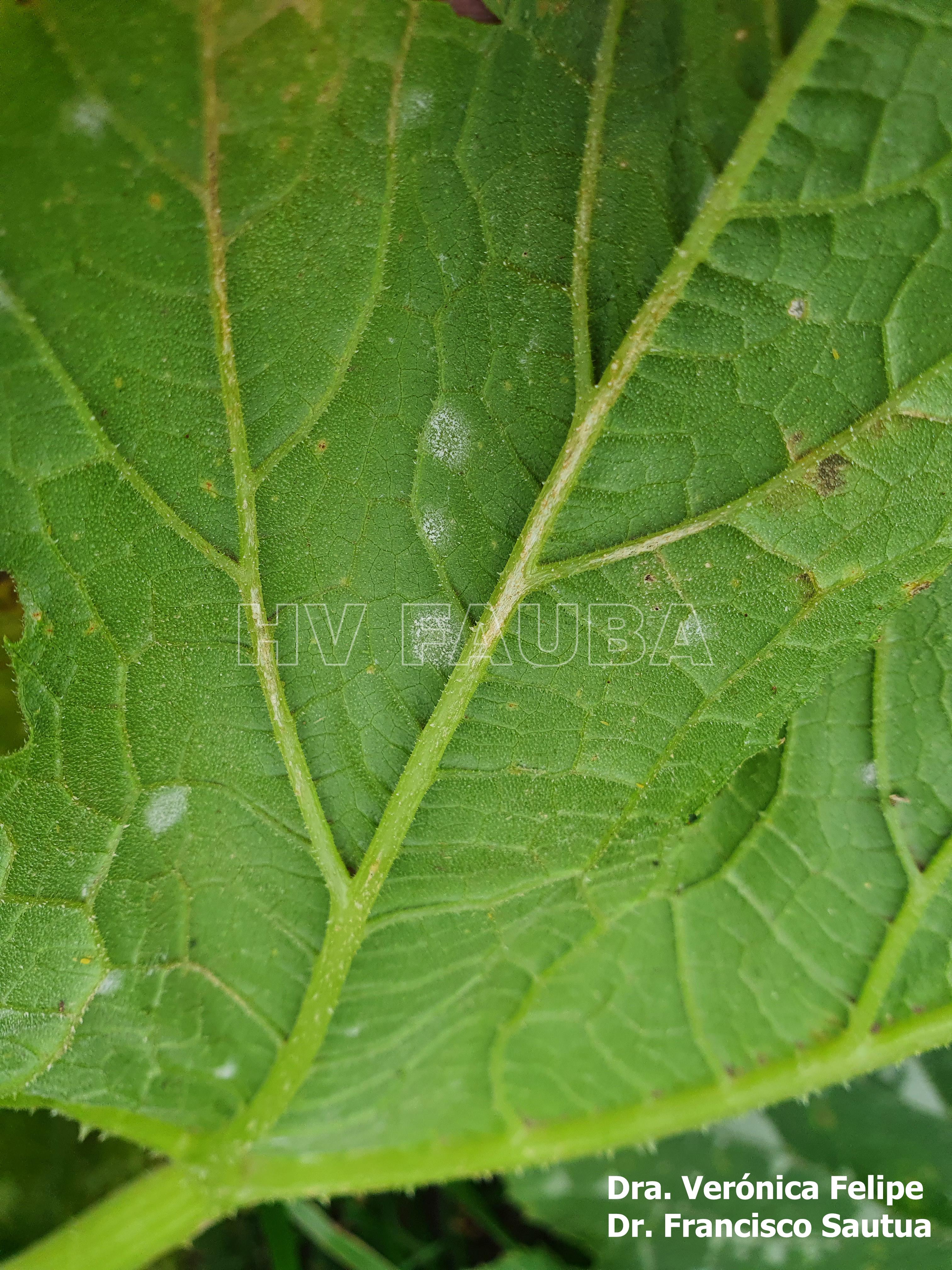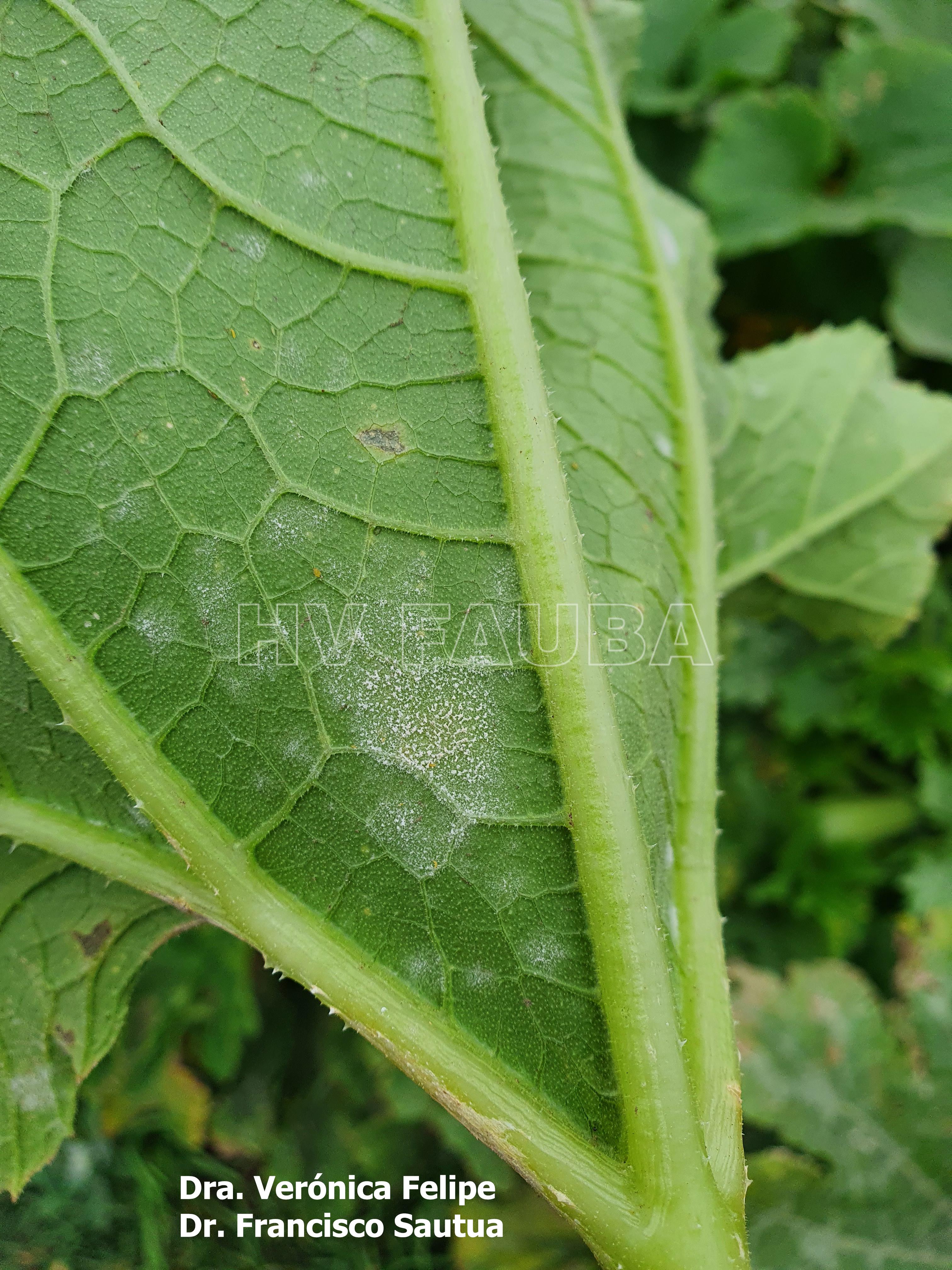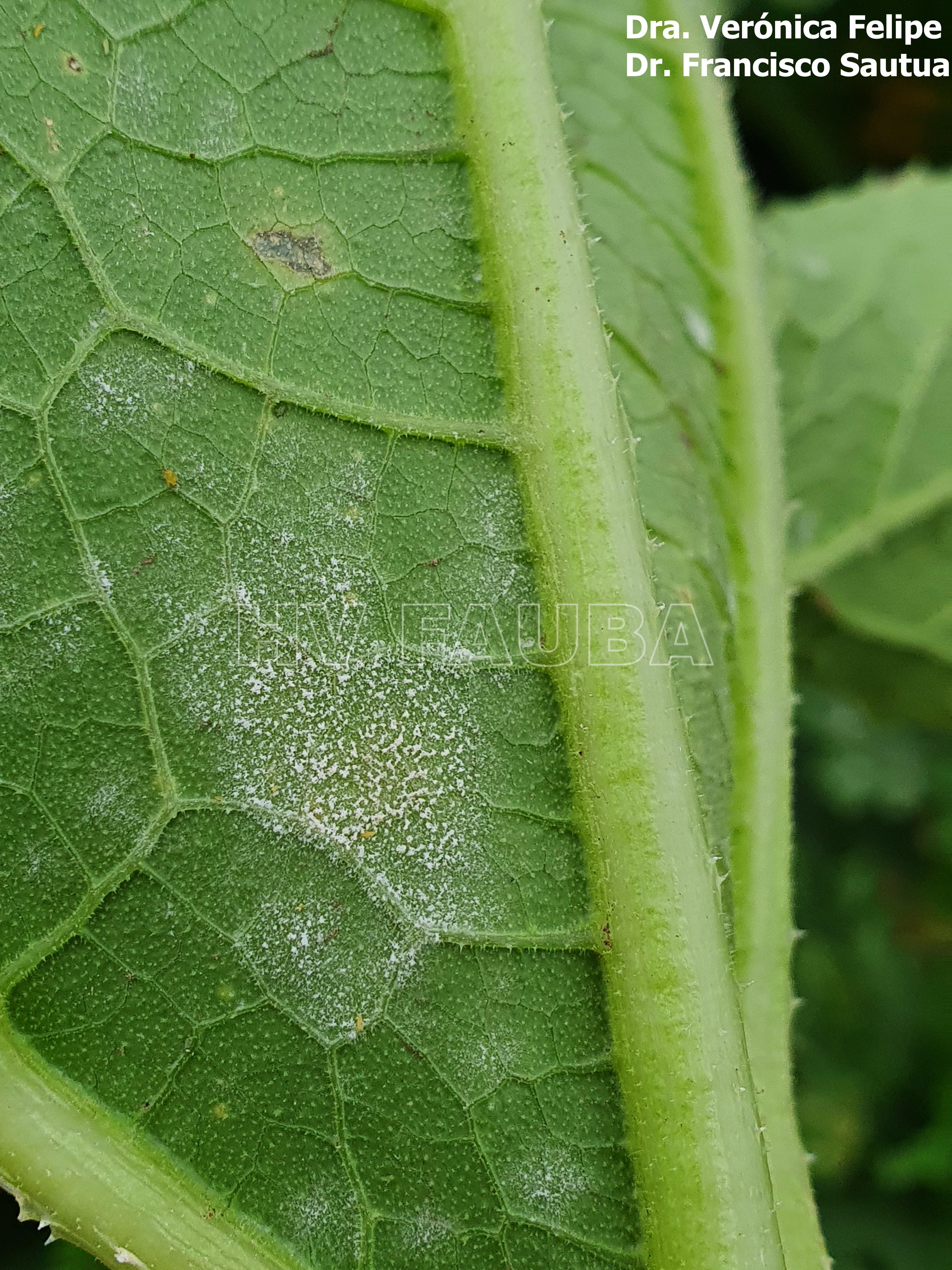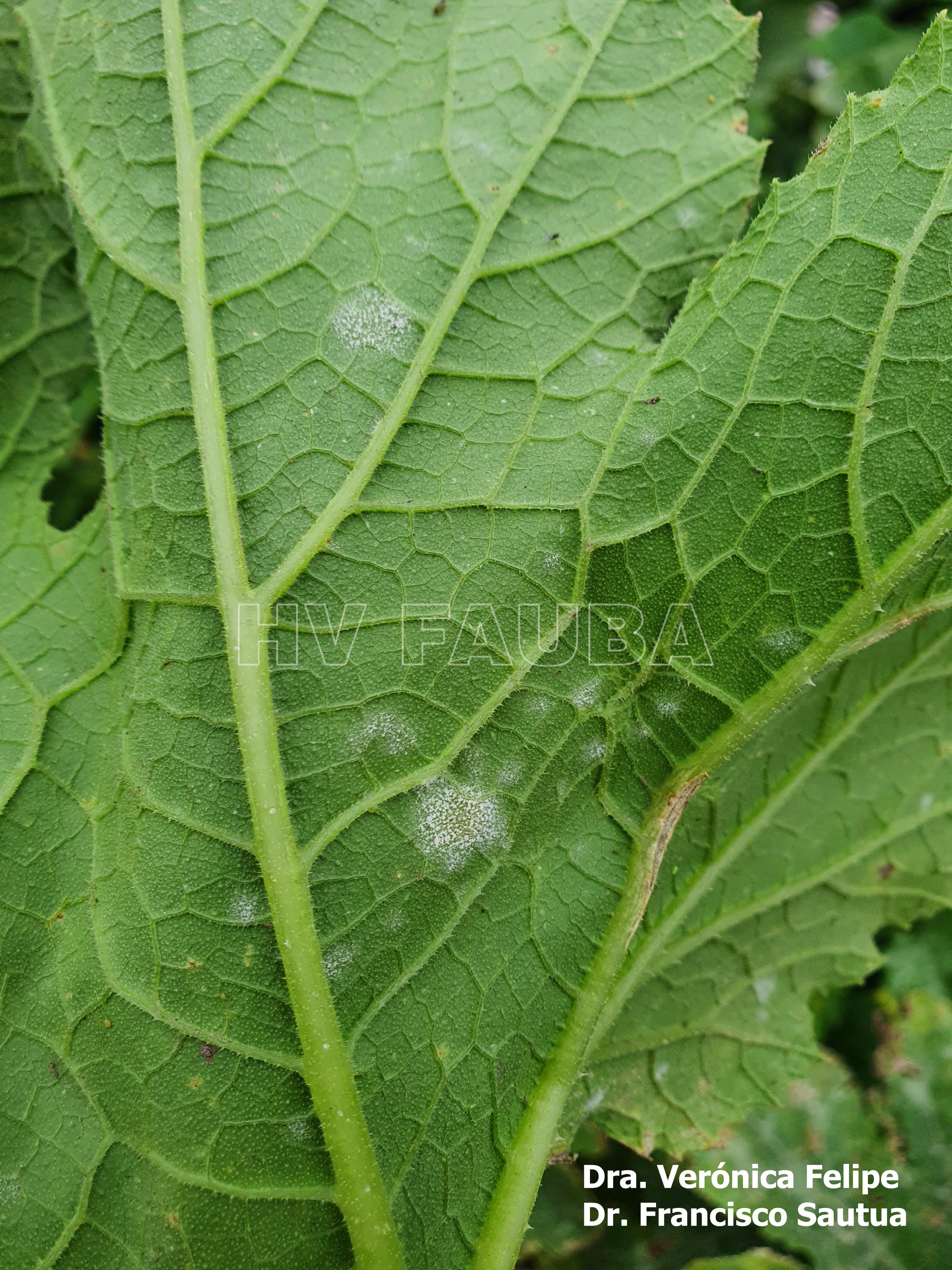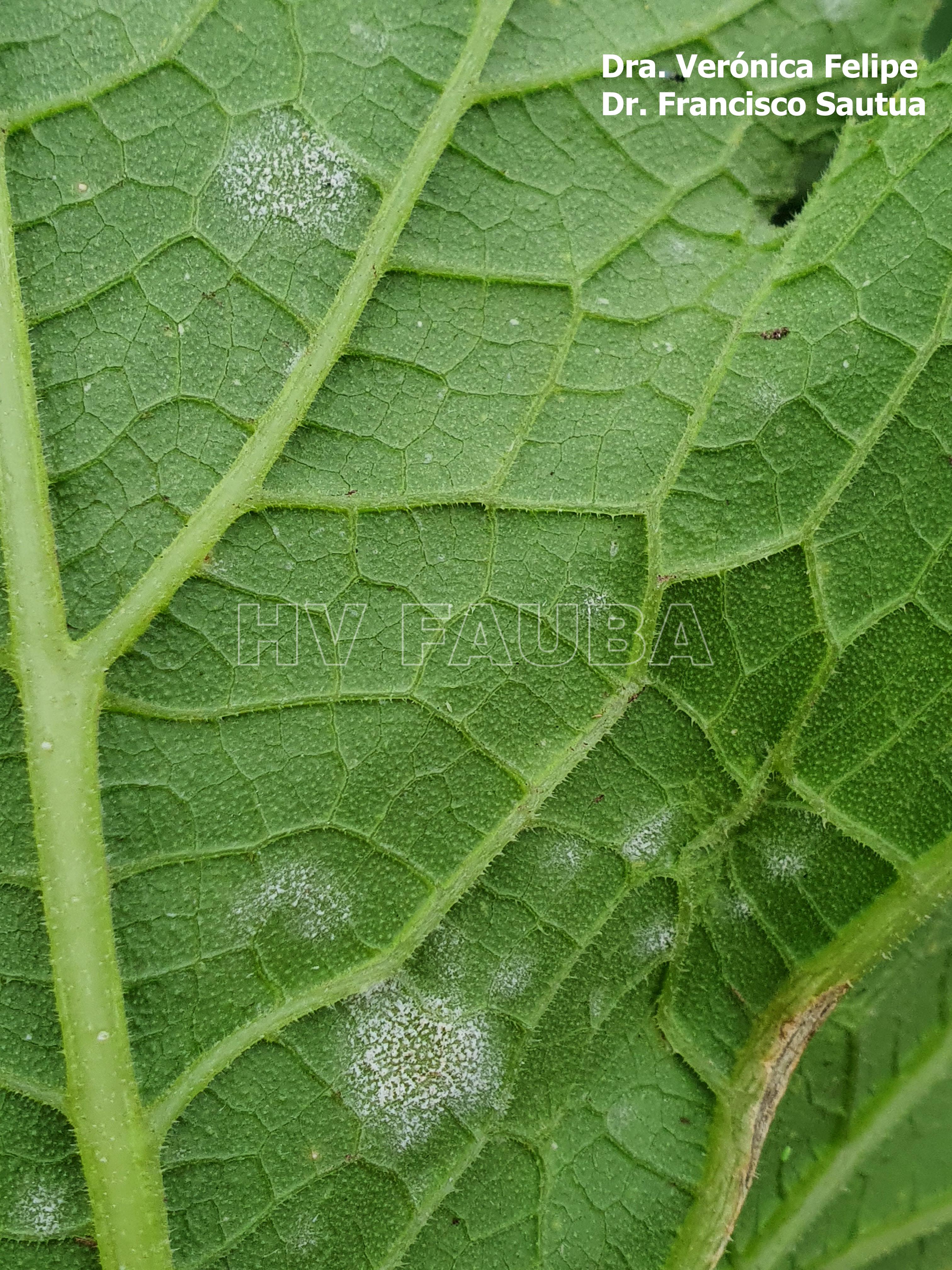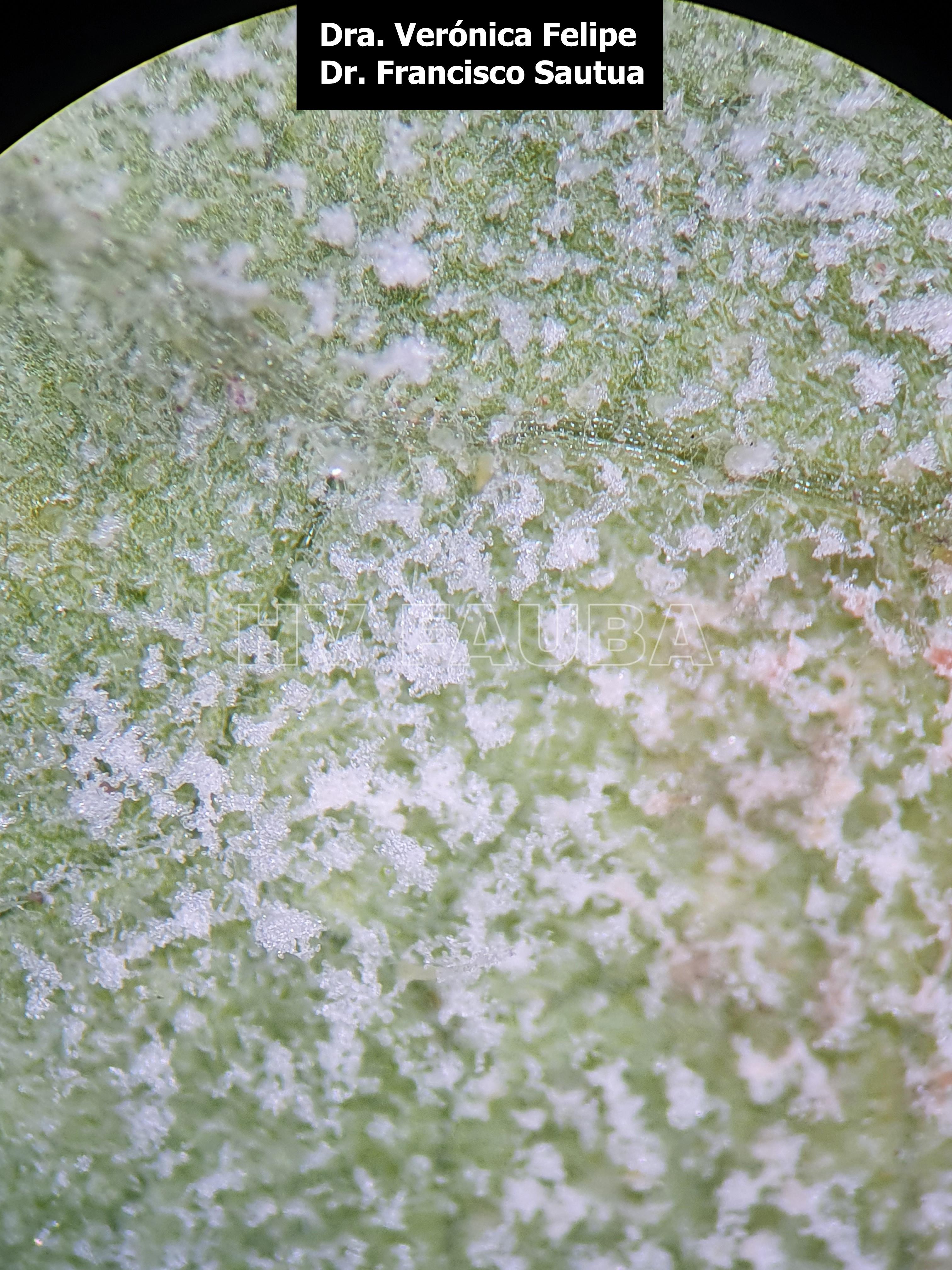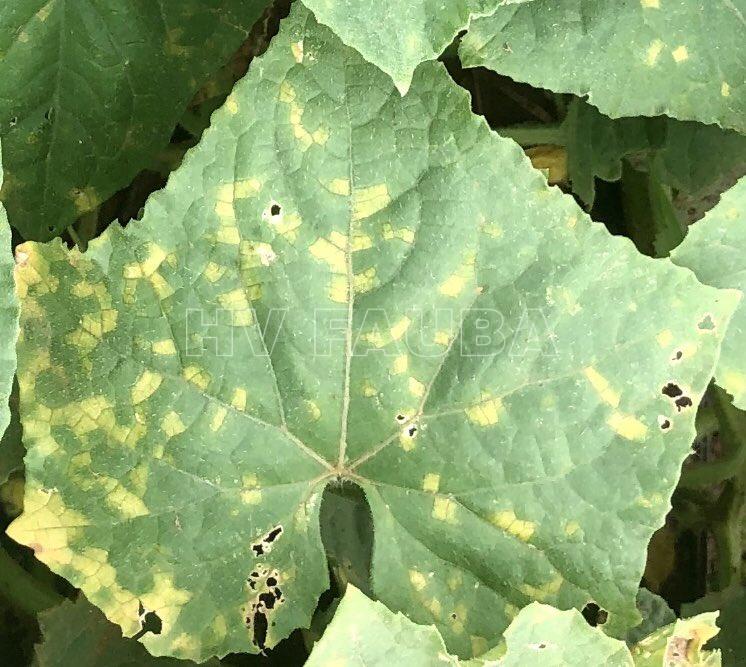.
Condición fitosanitaria: Presente
Grupo de cultivos: Hortícolas
Especie hospedante: Cucurbitaceae
Rango de hospedantes: específico / estrecho. Los «downy mildews» generalmente son patógenos hospedante-específicos. Solo hay raras excepciones en las que algunas especies de mildiu parecen tener un amplio rango de hospedantes.
Etiología: Pseudohongo. Biotrófico
Agente causal: Pseudoperonospora cubensis
Taxonomía: Eukaryota > Stramenopiles > Oomycetes > Peronosporales > Peronosporaceae > Pseudoperonospora
.
.
.
Síntomas y signos
- Autores: Dra. Verónica Felipe, Dr. Francisco Sautua
- Autores: Dra. Verónica Felipe, Dr. Francisco Sautua
- Autores: Dra. Verónica Felipe, Dr. Francisco Sautua
- Autores: Dra. Verónica Felipe, Dr. Francisco Sautua
- Autores: Dra. Verónica Felipe, Dr. Francisco Sautua
- Autores: Dra. Verónica Felipe, Dr. Francisco Sautua
- Autores: Dra. Verónica Felipe, Dr. Francisco Sautua
- Autores: Dra. Verónica Felipe, Dr. Francisco Sautua
- Autores: Dra. Verónica Felipe, Dr. Francisco Sautua
- Autores: Dra. Verónica Felipe, Dr. Francisco Sautua
- Autores: Dra. Verónica Felipe, Dr. Francisco Sautua
- Autores: Dra. Verónica Felipe, Dr. Francisco Sautua
- Autores: Dra. Verónica Felipe, Dr. Francisco Sautua
- Zoosporangios observados con lupa. Autores: Dra. Verónica Felipe, Dr. Francisco Sautua
- Autor: Zachariah Hansen
.
.
.
.
Bibliografía
The Cucurbit Downy Mildew Forecast Homepage (USA)
Bello JC, Sakalidis ML, Perla DE, Hausbeck MK (2021) Detection of Airborne Sporangia of Pseudoperonospora cubensis and P. humuli in Michigan Using Burkard Spore Traps Coupled to Quantitative PCR. Plant Disease 105(5): 1373-1381. doi: 10.1094/PDIS-07-20-1534-RE
Bradshaw MJ, Boufford D, Braun U, et al. (2024) An In-Depth Evaluation of Powdery Mildew Hosts Reveals One of the World’s Most Common and Widespread Groups of Fungal Plant Pathogens. Plant Dis. 108(3): 576-581. doi: 10.1094/PDIS-07-23-1471-RE
Chen T, Katz D, Ben Naim Y, et al. (2020) Isolate-Dependent Inheritance of Resistance Against Pseudoperonospora cubensis in Cucumber. Agronomy 10(8): 1086. doi: 10.3390/agronomy10081086
Cohen Y (1981) Downy mildew of cucurbits. In: D.M. Spencer (ed), The Downy Mildews, Academic Press, NY. 636 pages.
Cohen Y, Van den Langenberg KM, Wehner TC, et al. (2015) Resurgence of Pseudoperonospora cubensis: The Causal Agent of Cucurbit Downy Mildew. Phytopathology 105(7): 998-1012. doi: 10.1094/PHYTO-11-14-0334-FI
Cohen Y, Reuveni M, Gur L, et al. (2020) Survival in the field of Pseudoperonospora cubensis and Plasmopara viticola after extreme hot and dry weather conditions in Israel. Phytoparasitica 48: 699–703. doi: 10.1007/s12600-020-00839-y
Colucci S (2008) Host Range, Fungicide Resistance and Management of Pseudoperonospora cubensis, Causal Agent of Cucurbit Downy Mildew. Master’s thesis. North Carolina State University.
Colucci SJ, Holmes GJ (2010) Downy Mildew of Cucurbits. The Plant Health Instructor. doi: 10.1094/PHI-I-2010-0825-01
Crute IR (1981) The host specificity of Peronosporaceous fungi and the genetics of the relationship between host and parasite. In: D.M. Spencer (ed.), The Downy Mildews, Academic Press, NY. 636 pages.
D’Arcangelo KN, Wallace EC, Miles TD, Quesada-Ocampo LM (2023) Carboxylic Acid Amide but Not Quinone Outside Inhibitor Fungicide Resistance Mutations Show Clade-Specific Occurrence in Pseudoperonospora cubensis Causing Downy Mildew in Commercial and Wild Cucurbits. Phytopathology 113(1): 80-89. doi: 10.1094/PHYTO-05-22-0166-R
Fletcher K, Shin OH, Clark KJ, et al. (2022) Ancestral Chromosomes for Family Peronosporaceae Inferred from a Telomere-to-Telomere Genome Assembly of Peronospora effusa. Mol Plant Microbe Interact. 35(6): 450-463. doi: 10.1094/MPMI-09-21-0227-R
Gisi U (2002) Chemical Control of Downy Mildews. In: Advances in Downy Mildew Research. P.T.N. Spencer-Phillips, U. Gisi and A. Lebeda (eds.). Kluwer Academic Publishers. Dordrecht. 119-159.
Holmes G, Wehner T, Thornton A (2006) An old enemy re-emerges. American Vegetable Grower. February, 2006. 14-15.
Holmes GJ, Main CE, Keever III ZT (2004) Cucurbit downy mildew: A unique pathosystem for disease forecasting. Pages 69-80 in: P.T.N. Spencer‑Phillips and M. Jeger (eds), Advances in Downy Mildew Research, vol. 2. Kluwer Academic Publishers, Dordrecht, The Netherlands.
Keinath AP, Miller SA, Smart CD (2019) Response of Pseudoperonospora cubensis to Preventative Fungicide Applications Varies by State and Year. Plant Health Progress 20: 142-146. doi: 10.1094/PHP-04-19-0028-RS
Lebeda A, Widrlechner MP (2003) A set of Cucurbitaceae taxa for differentiation of Pseudoperonospora cubensis pathotypes. Journal of Plant Disease and Protection 110:337-349.
Palti J (1974)The significance of pronounced divergences in the distribution of Pseudoperonospora cubensis on its crop hosts. Phytoparasitica 2: 109-115.
Palti J (1975) Pseudoperonospora cubensis. Descriptions of Pathogenic Fungi and Bacteria, no. 457. Commonwealth Mycological Institute, Kew, England.
Palti J, Cohen Y (1980) Downy mildew of cucurbits (Pseudoperonospora cubensis): The fungus and its hosts, distribution, epidemiology and control. Phytoparasitica 8:109-147.
Palti J, Kenneth R (1980) Distribution of downy mildew fungi over the orders, families and genera and higher plants. In: D.M. Spencer (ed.), The Downy Mildews, Academic Press, NY. 636 pages.
Rani R,Negi P, Sharma S, Jain S (2022) Occurrence of oosporic stage of Pseudoperonospora cubensis on cucumber, in Punjab, India: A first report. Crop Protection 155: 105939. doi: 10.1016/j.cropro.2022.105939
Rsaliyev AS, Amirkhanova NT, Rametov NM, et al. (2018) Pseudoperonospora cubensis virulence and pathotype structure in Kazakhstan. Plant Pathol 67: 1924-1935. doi: 10.1111/ppa.12890
Thomas CE, Jourdain EL (1992) Host effect on selection of virulence factors affecting sporulation by Pseudoperonospora cubensis. Plant Disease 76: 905-907.
Thomas CE, Inaba T, Cohen Y (1987) Physiological specialization in Pseudoperonospora cubensis. Phytopathology 77:1621-1624.
Waterhouse GM (1973) Peronosporales. In: Ainsworth GC, Sparrow FK, Sussman AS (eds.), The Fungi, an Advanced Treatise. Vol 4B.. Academic Press. New York.
Wallace EC, D’Arcangelo KN, Quesada-Ocampo LM (2020) Population Analyses Reveal Two Host-Adapted Clades of Pseudoperonospora cubensis, the Causal Agent of Cucurbit Downy Mildew, on Commercial and Wild Cucurbits. Phytopathology 110(9): 1578-1587. doi: 10.1094/PHYTO-01-20-0009-R
Waterhouse GM, Brothers MP (1981) The taxonomy of Pseudoperonospora. Mycological Papers No. 148:1-28.
Zitter TA, Hopkins DL, Thomas CE (1996) Compendium of Cucurbit Diseases. American Phytopathological Society Press, St. Paul, MN.
